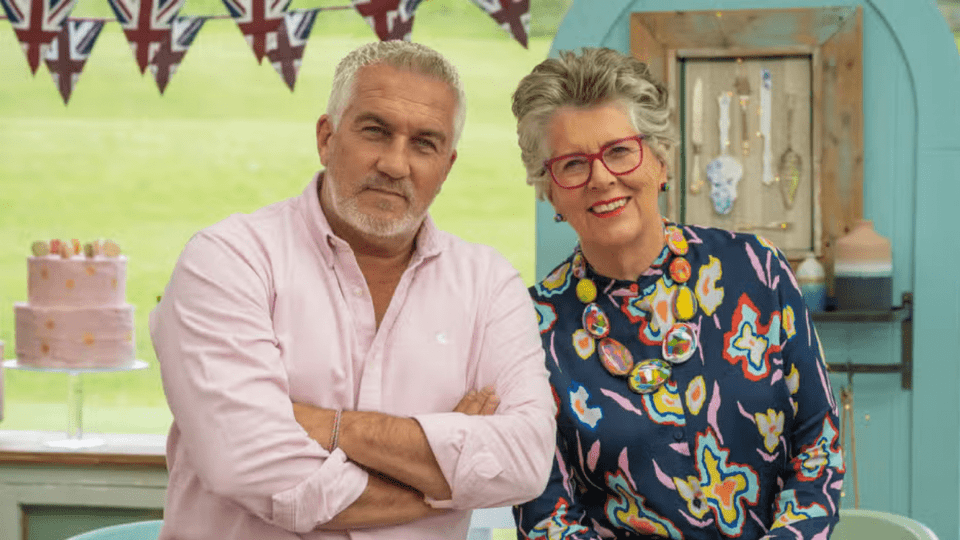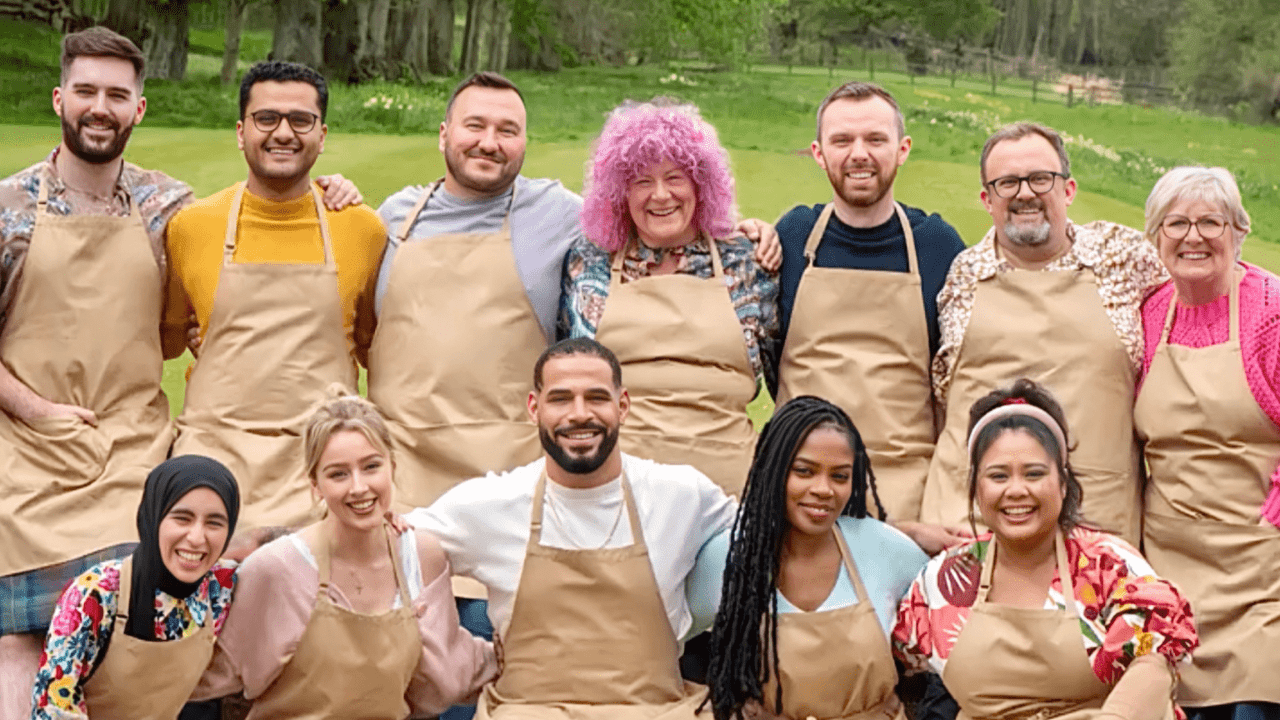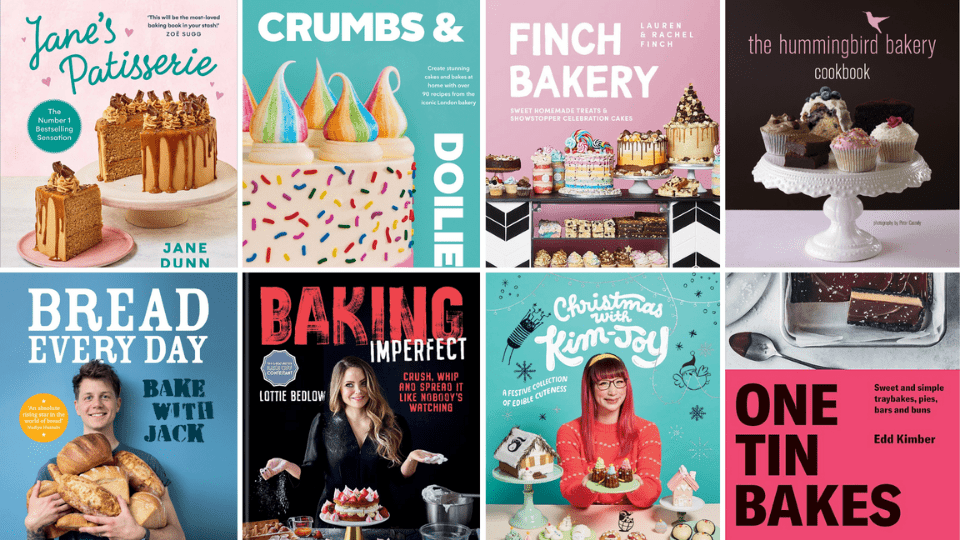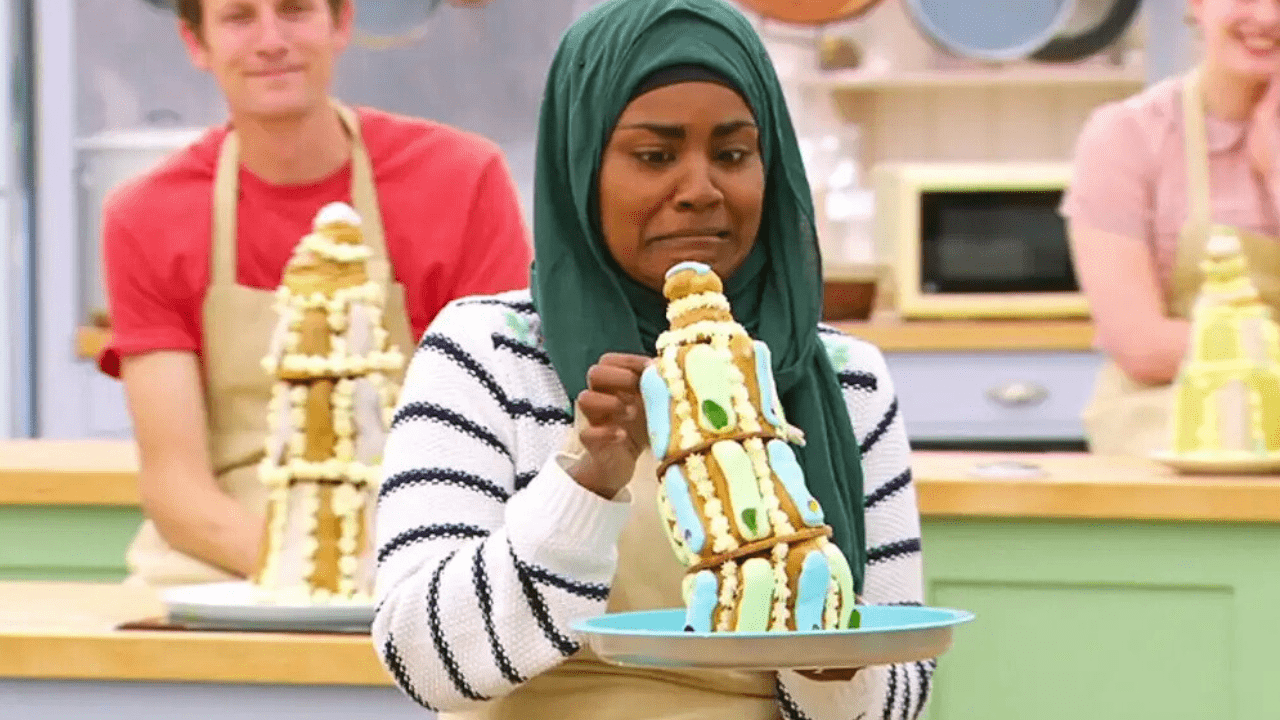The Great British Bake Off (GBBO) has captivated audiences worldwide not just with its delectable bakes and charming contestants, but also with its idyllic, quintessentially British settings. The iconic white tent, a symbol of culinary dreams and occasional disasters, has graced some of the UK's most picturesque and historically significant estates.
From its humble beginnings, GBBO has carefully cultivated a "village fete" aesthetic, a vision championed by executive producer Anne Beattie, aiming to evoke a nostalgic sense of British tradition where baked goods, jams, and pickles might be sold. This foundational vision has guided the selection of every filming location, transforming the show into a visual celebration of British heritage and landscape. The show's journey through its locations reflects its evolution, starting with a unique, nomadic approach in its inaugural series before settling into a more consistent single-location model. Here we are taking a tour of these memorable backdrops, exploring their history, their role in the show, and what makes each one a special part of the Bake Off legacy.
The following information provides a concise overview of The Great British Bake Off's filming locations throughout its history:
| Series | Years Filmed | Location Name | Key Characteristics/Public Access |
|---|---|---|---|
| Series 1 | 2010 | Multiple Locations (Cotswolds, Scone Palace, Sandwich, Bakewell, Mousehole, Fulham Palace) | Varied historic sites and picturesque villages; some open to public, others with limited access |
| Series 2 | 2011 | Valentines Mansion | 17th-century mansion, renovated in Victorian style; open to the public on Sundays and Mondays |
| Series 3 & 4 | 2012-2013 | Harptree Court | Georgian stately home; private residence, not open to the public |
| Series 5-10 | 2014-2019 | Welford Park | Luxurious estate, Grade I-listed; open for snowdrop season (Jan-Mar) |
| Series 11 & 12 | 2020-2021 | Down Hall | Historic manor, now a four-star hotel; open to visitors year-round |
| Series 13-present | 2022-present | Welford Park | Luxurious estate, Grade I-listed; open for snowdrop season (Jan-Mar) |
The Grand Tour – Series 1's Mobile Marquee (2010)
The inaugural series of The Great British Bake Off stood apart from all subsequent seasons by embracing a truly itinerant spirit. Instead of a single, fixed location, the white tent moved from town to town each week, turning the competition into a culinary road trip across Britain. This nomadic approach was not merely experimental; it was integral to the series' broader narrative, which aimed to trace "the history of British baking: visiting local baking landmarks and discovering why we bake what we bake today". This multi-location format in Series 1 was a deliberate thematic choice, designed to explore the rich breadth of British baking history and regional specialties. This approach added a deeper cultural dimension to the show's initial concept, elevating it beyond a simple competition to a journey of culinary discovery.
The Cotswolds (Kingham, Oxfordshire)
The picturesque Cotswolds hosted the pilot episode, focusing on "cakes". Specifically, filming took place in Kingham, a village renowned for its "quintessentially British" charm, complete with stone cottages and winding paths that evoke a fairy-tale setting. The Cotswolds region itself is a celebrated Area of Outstanding Natural Beauty, a popular backdrop for numerous films and TV shows like
Downton Abbey and Bridget Jones's Diary. A notable connection further reinforcing the show's deep roots in authentic British countryside and culinary tradition is that GBBO judge Prue Leith calls this region home, residing in a "chocolate box" house in Moreton-in-Marsh. The presence of a key judge living in such an iconic British location subtly validates the show's aesthetic choices, making the setting feel more genuine and less like a mere set. Visitors can experience the charm by staying in local accommodations or visiting bakeries.
Scone Palace (Perth, Scotland)
The second episode, dedicated to "biscuits," found its majestic setting at Scone Palace in Perthshire, Scotland. While not known for its baked goods, Scone Palace holds profound historical significance as the traditional coronation site for Scottish kings. Its imposing architecture, featuring turrets, towers, and a grand front gate, truly resembles a medieval castle. The Earl of Mansfield and his family still reside there, but the palace is generally open for tours for about seven months a year, with special access to certain wings.
Sandwich (Kent, England)
The "bread" challenge of Series 1 was filmed in the historic town of Sandwich, Kent, with the iconic Sarre Windmill providing a distinctive backdrop. The town's name itself hints at its history as a market town on sandy soil. It is characterized by cozy cottage houses and quaint bridges over streams. The Sarre Windmill, though no longer functional, remains an iconic local spot open to visitors year-round.
Bakewell (Derbyshire, England)
The "pudding" challenge took contestants to Bakewell, a small Derbyshire town synonymous with its namesake desserts. With fewer than 4,000 residents, Bakewell is nestled on the River Wye, offering scenic countryside views. It is most famous for the Bakewell Pudding and Bakewell Tart, which visitors can sample at three specialty bakeries: the Bakewell Tart Shop and Coffee House, Bloomers of Bakewell, and the Old Original Bakewell Pudding Shop. Bed and breakfasts are available for those wishing to immerse themselves in the town's enchanting atmosphere.
Mousehole (Cornwall, England)
"Pastry Week" brought the tent to Mousehole, a charming fishing port in Cornwall. Despite its playful name (an old English slang for pastries), Mousehole is primarily known for its unique enclosed harbor and its designation as a Cornwall Area of Outstanding Natural Beauty, affording it protections akin to a National Park. The village offers several bed and breakfasts and hotels for fans eager to visit.
Fulham Palace (Fulham, London)
The grand finale of Series 1 was fittingly held at Fulham Palace in London. A perfect setting for a celebratory tea party, Fulham Palace is open to visitors daily for free walkarounds and tours. Its grounds boast a museum that delves into the site's extensive history, dating back to prehistoric times.
Settling Down – The Era of Single Locations (Series 2-4)
Following the ambitious but logistically demanding first series, producers made a pivotal decision: from Series 2 onwards, the competition would be held in a single, consistent location for the entire season. This shift streamlined production and began to establish a more stable visual identity for the show. The move from a nomadic Series 1 to a single, consistent filming location from Series 2 onwards represents a crucial maturation in GBBO's production strategy. This change likely improved logistical efficiency, reduced costs associated with frequent relocation, and allowed for better set continuity, which in turn helped to solidify a more recognizable and iconic brand identity for the show, fostering greater viewer familiarity and association with a specific picturesque setting.
Valentines Mansion (Redbridge, East London) – Series 2 (2011)
Valentines Mansion became the first fixed home for the Bake Off tent, hosting the entirety of Series 2. This series also marked other significant format changes, including Mel Giedroyc and Sue Perkins taking over narration and the introduction of the "Star Baker" award. The concurrent introduction of "Star Baker" and new narrators (Mel & Sue) alongside the single location at Valentines Mansion in Series 2 indicates a period of significant format refinement and professionalization. These changes, occurring simultaneously, suggest that producers were actively learning from Series 1 and adapting the show's structure to enhance both the competitive element and overall viewer engagement. This combination of a stable visual environment and refined competitive elements contributed to making the show more predictable, engaging, and polished for its audience.
This 17th-century mansion house in Redbridge has been fully renovated in Victorian style. It is open to the public on Sundays and Mondays, offering free tours, and serves as a popular venue for conferences, weddings, and, of course, cooking shows, blending old-world charm with modern events.
Harptree Court (East Harptree, Somerset) – Series 3 & 4 (2012-2013)
For two consecutive years, Series 3 and 4 found their home amidst the sprawling grounds of Harptree Court in Somerset. Built in 1797 for affluent businessman Joshua Scrope and designed in a neoclassical style by Charles Harcourt Masters, Harptree Court is one of the show's "newer" featured locations. The Grade II-listed Georgian property boasts manicured forests, greenery, a stream, and over 50 acres of land with a lake view. The high market value and extensive features of Harptree Court, which was recently listed for almost £7 million with 11 bedrooms and over 50 acres, highlight the significant investment and prestige associated with securing such grand, historic venues for filming. This reinforces the show's commitment to its high-production value aesthetic and its ability to access exclusive locations, aligning with its "village fete" theme but executed on a grand scale. However, unlike some other locations, Harptree Court is a private residence and is not open to the public, except for what can be seen from a distance.
Welford Park and Its Legacy (Series 5-10, 13-present)
Welford Park in Berkshire has become virtually synonymous with The Great British Bake Off, serving as the show's primary and most enduring filming location for nine of its fifteen seasons. It first welcomed the tent in 2014 for Series 5 and continued as its home until 2019. After a temporary relocation during the pandemic, the show returned to its beloved grounds in 2022 , solidifying its status as the iconic backdrop. Welford Park's long and consistent tenure, including its return post-pandemic, has cemented its status as the "spiritual home" of GBBO. This consistency allows viewers to strongly associate the show with this specific, picturesque setting, fostering a sense of tradition and continuity that contributes significantly to the show's brand recognition and enduring appeal.
This luxurious estate, built in 1652, stands on what was once a monastic grange and later served as Henry VIII's deer-hunting lodge. The Grade I-listed Welford Park House is surrounded by picturesque gardens, parkland, an apple orchard, a wildflower meadow, and woodland. The estate even has its own church, Welford St. Gregory, one of Berkshire's rare round tower churches.
While Welford Park is a privately owned home, by the same family since 1619, and not generally open to the public year-round, it offers a limited window for visitors during its famous snowdrop season, typically between January and March. The Bake Off tent itself is a temporary structure, erected for the 10 weeks of filming between April and June. Contestants do not stay on the estate but are housed in nearby hotels, commuting to the tent for weekend filming sessions, allowing them to maintain their regular jobs during the week. This detailed filming schedule, which accommodates contestants' regular employment and provides local accommodation, reveals the meticulous logistical planning involved in balancing a demanding TV production with the practical realities of amateur participants' lives. This approach demonstrates a commitment to making the show accessible to a diverse range of bakers, thereby enhancing the authenticity of the competition. The estate is well-equipped to host the production, providing amenities like a green room and catering for the crew.
Baking in a Bubble – The Pandemic Years (Series 11 & 12)
The global COVID-19 pandemic presented unprecedented challenges for television production, forcing The Great British Bake Off to temporarily relocate and adapt its filming strategy. For Series 11 (2020) and Series 12 (2021), the show moved from Welford Park to Down Hall in Essex. The forced relocation to Down Hall and the implementation of a "quarantine bubble" during the pandemic highlight the show's remarkable adaptability and the production team's resilience in ensuring the series could continue despite significant external challenges. This successful pivot underscores the show's importance to its network and its audience, demonstrating a strong commitment to maintaining continuity even under duress.
Down Hall was chosen specifically because its extensive grounds and hotel facilities allowed contestants and producers to live on-site in a "quarantine bubble" for the duration of filming, minimizing the risk of outbreaks and ensuring continuity. This period also saw a shortened filming schedule of six weeks for Series 11, a direct consequence of the pandemic. Down Hall boasts a long history dating back to at least the 11th century, with its current version completed in 1873. Today, it operates as a four-star hotel, featuring protected woodlands, a conference site, and a wedding venue, open to visitors year-round. Its ability to accommodate the entire production team and cast within a self-contained environment proved crucial during a challenging time, demonstrating the show's resilience.
The Magic of the Bake Off Tent
The iconic white tent, central to the GBBO experience, is a temporary structure, only erected for the 10-12 weeks of filming each year. Despite the idyllic on-screen appearance, filming is an intensive process. Episodes are pre-recorded months in advance, typically between April and June. Bakers film for up to 13 hours a day over weekends, allowing them to maintain their regular jobs during the week. For continuity, contestants wear the same outfits for the two days an episode is filmed, though aprons are changed.
To ensure fairness and prevent technical glitches, every one of the 12 ovens is tested daily by baking a Victoria sponge. The practice of testing all ovens with a standard bake, along with the extensive use of cleaning supplies (1,000 dishcloths, 80 sponges, and 30 litres of washing-up liquid per series), highlights the meticulous behind-the-scenes efforts to ensure a fair and consistent baking environment. This level of detail underscores the production's commitment to quality control and the integrity of the competition, ensuring that no baker is disadvantaged by equipment malfunction.
The human element of the show is also rigorously managed. Contestants undergo a lengthy application process, involving questionnaires, phone calls, baking for a food technician, screen tests, and even a meeting with a psychologist to assess their resilience for the demands of the show and subsequent public attention. Once on set, they face frequent interviews, sometimes up to eight times a day, and constant camera surveillance. While the show covers some expenses, trial run ingredients are not fully paid for, adding a personal investment from the bakers. The demanding nature of filming, with long hours, constant interviews, and the financial burden of trial bakes, reveals the intense reality behind the show's "feel-good" facade. This contrasts with the idyllic on-screen image, showcasing the significant personal commitment required from amateur bakers. However, the genuine, supportive dynamic between presenters and contestants, such as Mel and Sue helping clean work surfaces or famously nibbling bakes, provides a counterpoint, demonstrating that the warmth and camaraderie seen on screen are authentic.
Adding to the show's unique charm is the art of illusion. The beautiful illustrations of the bakes, a signature element of the show, are created by a single artist, Tom Hovey. Crucially, he draws what the bakers planned to create, rather than the potentially imperfect finished product, allowing for artistic license. This practice of illustrating planned bakes rather than the actual, often imperfect, finished products reveals a subtle but significant aspect of narrative control. This artistic choice allows the show to maintain its aspirational quality and focus on the bakers' creative intent, even when reality falls short, contributing to its generally positive and encouraging tone.
From the adventurous cross-country tour of Series 1 to the established elegance of Welford Park and the adaptive resilience shown at Down Hall, the filming locations of The Great British Bake Off are far more than mere backdrops. They are integral characters in the show's narrative, evolving alongside its format and reflecting its enduring appeal. Each stately home, historic palace, or charming village contributes to the show's unique "village fete" aesthetic, grounding the competition in a sense of timeless British tradition and picturesque beauty. The careful selection of these sites, whether publicly accessible or privately owned, reinforces GBBO's commitment to its aspirational and authentic image. The locations, much like the bakes themselves, tell a story of heritage, adaptation, and the enduring magic of The Great British Bake Off, inviting viewers to not just witness a baking competition, but to embark on a delightful culinary and cultural journey across Britain.



